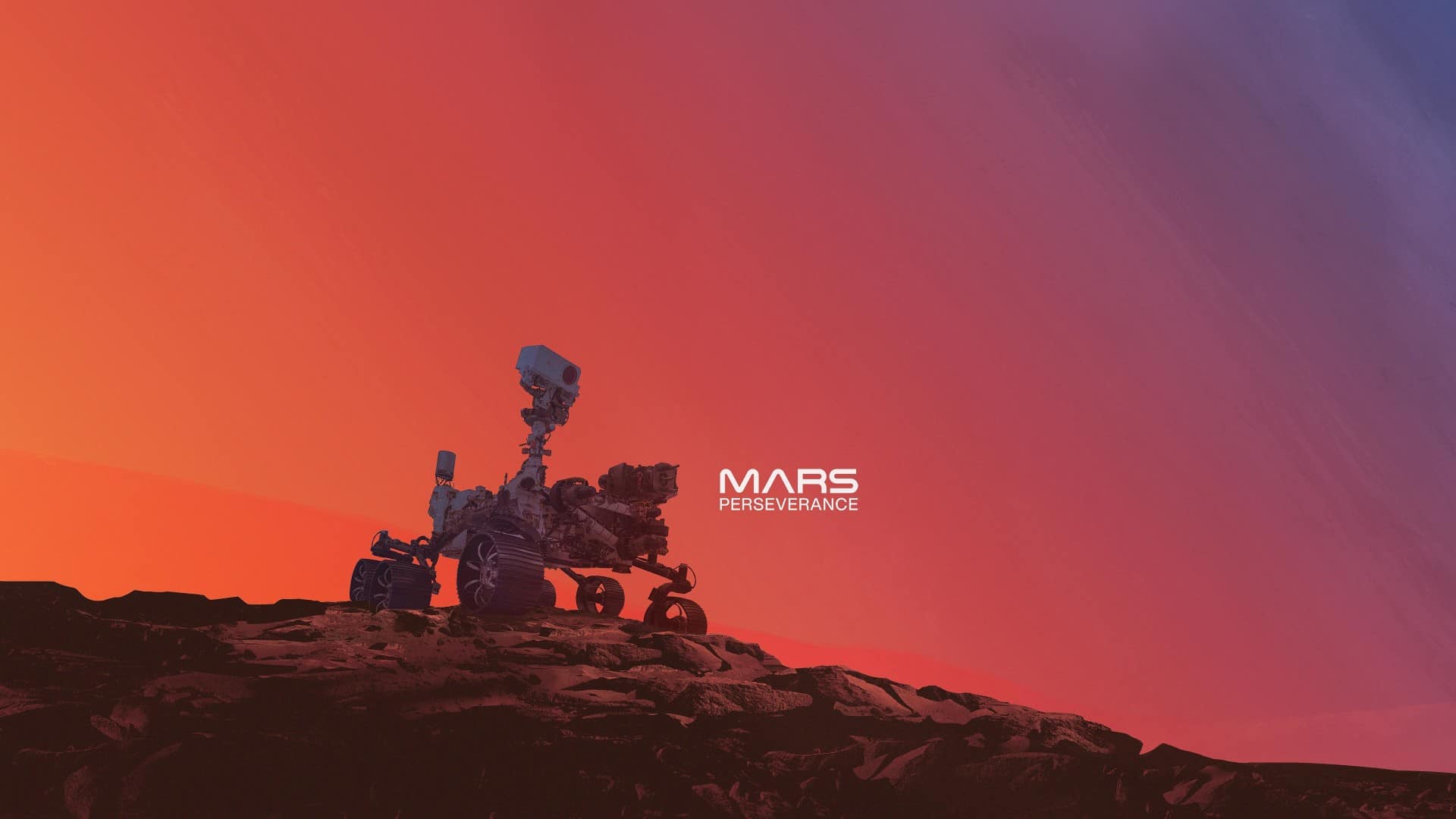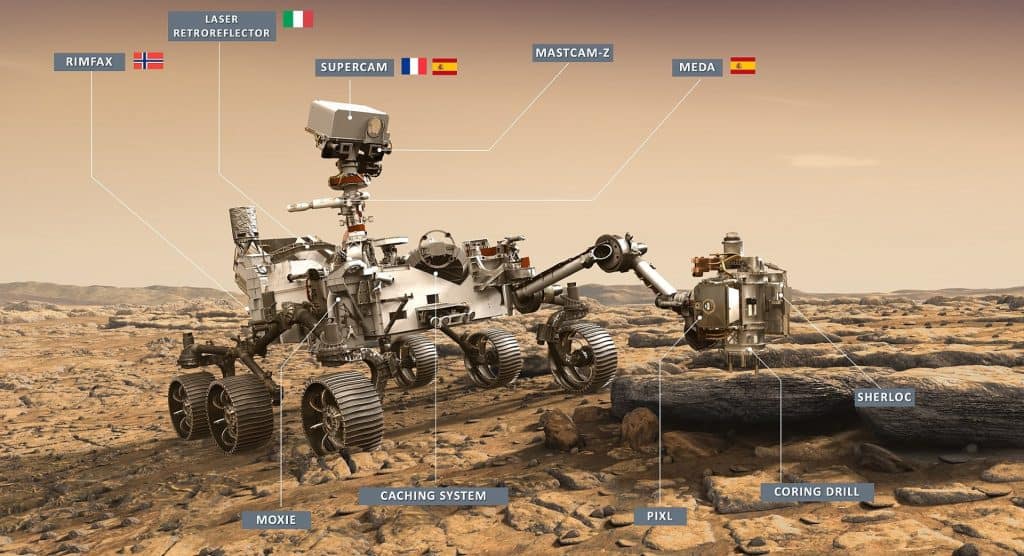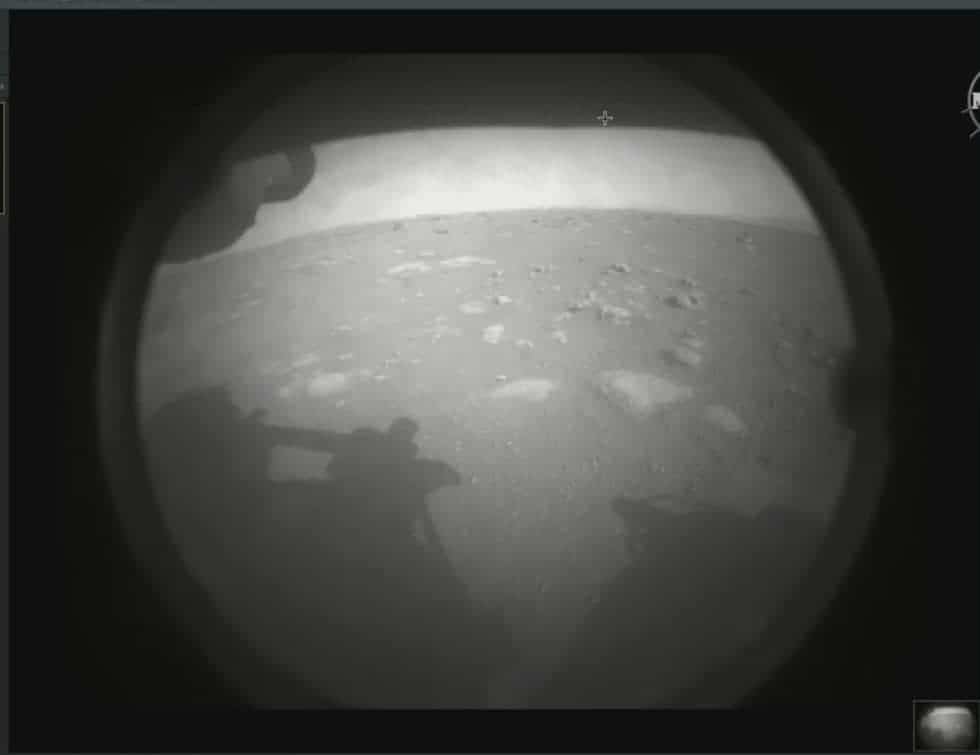
Everything You Need to Know About the Mars Perseverance Rover
February 23, 2021 - Emily Newton
Revolutionized is reader-supported. When you buy through links on our site, we may earn an affiliate commision. Learn more here.
It’s the question on everybody’s mind — is there life on Mars? With the landing of NASA’s Perseverance rover, the more likely question that this robotic explorer will answer is — was there life on Mars? Now that the Mars mission 2020 is off to a successful start, NASA and everyone watching expects some mind-blowing answers.
On February 18, 2021, Perseverance touched down on one of the most intriguing planets in the solar system. Though plenty of planets remain unexplored, Mars is currently the most accessible one for NASA. After previous exploration, the agency is hoping to bring some new information to light.
Perseverance comes equipped with plenty of gadgets and unique abilities. Its quest to find signs of life could ultimately lead to future human exploration on the planet. Though this kind of groundbreaking feat is still quite a ways away, this rover could be one of the progressive steps NASA needs to reach that goal.

What Can the Perseverance Rover Do?
After seven months, NASA did it. Perseverance landed on the Red Planet on February 18, 2021, after it initially launched back on July 30, 2020. Coming in at 2,260 pounds, this rover has plenty of features, all focused on either discovering life or eventually fostering it on Mars.
Its main mission is to find signs of ancient life by collecting samples of rock and soil for eventual return to Earth. Other objectives include finding potential biologically rich sites from which to take samples and assess how habitable the planet was for potential ancient life. Most curiously, if all goes according to plan, the Mars 2020 mission could test feasibility and practicality for future human exploration.
Perseverance has a few life-scanning tools. The two Raman spectrometers shine ultraviolet (UV) light onto soil or a rock, then read the composition to decide if it’s a worthy sample to take.
The PIXL and SuperCam gadgets then help the rover detect samples from several meters away and see samples extremely up-close. Perseverance also has two microphones, which will capture countless sounds during its time on the planet.
The RIMFAX radar is specifically for detecting water, even if it’s below the surface. Then, the MEDA weather station will gather readings on temperature, wind conditions, humidity, dust, and atmospheric pressure.
Last, the rover has Ingenuity, a helicopter drone that will conduct a 30-day flight test. This experiment will determine whether or not flying vehicles across Mars is a practical way to explore and gather samples and data.
All in all, Perseverance has so far been a $2.7 billion project, which is an astounding and encouraging feat.
What Led to Mars Mission 2020 to Launch?
This Mars exploration mission is different from others in the past. Those behind Perseverance’s development and operation have their eyes on finding signs of ancient life on the red planet. Without previous efforts and collaboration, though, this launch would not have been possible.
NASA has conducted plenty of space exploration in the past. It has even landed a few rovers on Mars — Sojourner, Opportunity, Spirit, and Curiosity all came before Perseverance. Most prominently, Curiosity played a major role in inspiring the design of the Perseverance rover.
It used the nuclear power design that Curiosity used, helping it operate better than solar in instances of no sunlight. Based on the previous discoveries that Curiosity made, though, Perseverance seeks out new information.
The biggest discovery in the past was when NASA discovered that the surface of Mars has areas of flowing water and others where water once pooled. In fact, the very spot where Perseverance touched down, Jerezo Crater, used to be a lake.
The main missions of these previous rovers were not primarily to study past or present life on Mars, though. In fact, the first spacecraft to land on the planet were not rovers, but instead a lander and an orbiter, Viking 1 and 2. These projects lasted from the 1970s to the 1980s and sought to find traces of life on Mars.
Fast-forward to 2020, and Perseverance builds on all of NASA’s previous work and is ready to make some groundbreaking discoveries. Of course, such a powerful mission wouldn’t have the impact that it currently has without its name. 13-year-old Alexander Mather submitted a winning entry for the Mars mission 2020 project, which later earned him the right to name the rover.
Thanks to Alexander, this rover became what it is today — Perseverance.

Why Is This Step So Important?
Perseverance elaborated on previous innovation. For one, the landing of this rover was nowhere near as anxiety-inducing for NASA operators as past models with so-called “seven minutes of terror” landings. Instead, Perseverance used countless cameras and orbital satellites to land with a supersonic parachute, thrusters, and nylon cords.
This efficient landing was only the beginning of why Perseverance is so important, though. The MOXIE system, most notably, operates alongside the MEDA weather station. However, it has a different function — it acts like a tree, taking in carbon dioxide from the air on Mars and turning it into oxygen.
Though MOXIE is just one part of Mars mission 2020, it’s one of the most important for future exploration. If MOXIE successfully produces oxygen — and the oxygen stays on the surface — then humans may be able to travel to the Red Planet to explore it themselves.
Travel to the moon is one feat. It’s closer and has more welcoming, vacuum-like conditions than Mars. But sending humans to Mars would be the journey of a lifetime. This seventh-month trip would be a drastic difference from the 3-day and 240,000-mile trip to the moon. Nevertheless, the current steps for getting oxygen on Mars could be the beginning of changing life altogether.
Was There Life on Mars?
Perseverance traveled about 292.5 million miles in total, reaching the halfway point on November 2, 2020. Since Mars takes longer to orbit the sun than the Earth, NASA had to time the rover’s takeoff so it was fast and efficient. Now, Perseverance will stay on the Red Planet for at least one year in Mars time, which is about 687 Earth days — or almost double.
All these numbers factor into the ultimate mission: finding out if there has ever been life on Mars. Beyond this age-old question, though, Perseverance could answer an even bigger question — are Earthlings alone in this awe-inspiring, ever-expanding, unknowable universe?
If there was, in fact, life on Mars at one point, then it’s a safe bet that other planets have harbored some form of life as well. Some planets may even still have life. Ultimately, Earth becomes invisible when you zoom out enough into the universe. There are so many other galaxies apart from the Milky Way. In that perspective, it’s easy to imagine that life somewhere else exists and thrives.
As of current understanding, the universe is 93 billion lightyears in diameter overall. Light travels at 5.88 trillion miles per hour. So, deep exploration far beyond Mars is simply impossible — at least right now. So, Mars is currently the best microcosm to study in the universe. It’s relatively accessible and, upon analyzing the samples, humans could finally have definite answers to the more existential questions in life.
For now, Perseverance will continue exploring Mars, working solidly towards more information. Elsewhere in the universe, NASA’s Dragonfly spacecraft will launch from Earth in 2026 and arrive at Titan, one of Saturn’s moons, in 2034. Dragonfly will also be looking for signs of life.
Future Exploration
Both Perseverance and Dragonfly are signs of what’s to come in the future. As new technology emerges and NASA evolves, the agency will be able to send more and more rovers off into the Cosmos, searching for any form of life. With Perseverance leading the charge through its oxygen-producing functions, new planets may one day become habitable for humans.
Revolutionized is reader-supported. When you buy through links on our site, we may earn an affiliate commision. Learn more here.
Author
Emily Newton
Emily Newton is a technology and industrial journalist and the Editor in Chief of Revolutionized. She manages the sites publishing schedule, SEO optimization and content strategy. Emily enjoys writing and researching articles about how technology is changing every industry. When she isn't working, Emily enjoys playing video games or curling up with a good book.




